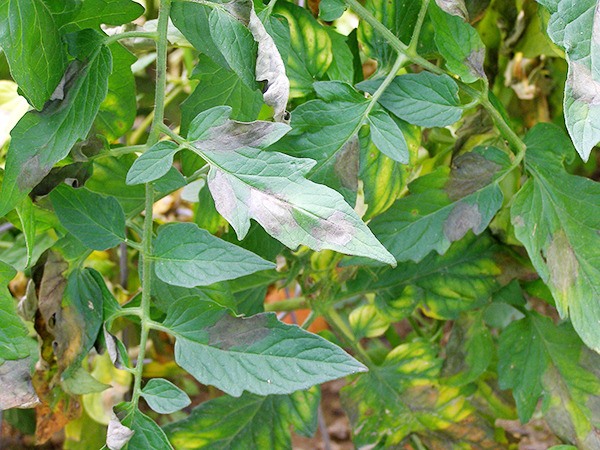It has been a warm and dry growing season. Depending on the location of their gardens, many people have been harvesting large quantities of tomatoes for several weeks and others have just begun to enjoy the giddy pleasure.
This is the time of year that a change from dry to wet weather can be a threat to tomatoes. Considered by many gardeners to be the worst disease in the region, the fungal disease Late Blight typically strikes toward the end of summer when there is more “marine” moisture in the air and late summer precipitation begins.
This deadly fungal disease can wipe out a tomato garden in only a few days! Dark, dead areas appear on the stems, leaves and fruit of the tomato plant. Vines collapse in black heaps as if hit by an early frost. Green fruit rots rather than ripening.
For the avid tomato gardener, the onset of Late Blight is a disappointing end to a promising tomato season!
Late Blight requires free moisture on the plant for the fungal spores to germinate. If the plant foliage can be kept dry, there is a chance to protect the plant. Stake the plant off the ground so the foliage is not resting on damp soil or the soaker/drip hose.
Water only at the base of the plant and maintain dry foliage. Prune each plant to keep limbs from touching another plant or extending into the boundaries of another plant.
Reduce the amount of foliage to ensure ample air circulation around and between tomato plants so they can dry quickly following rainy weather.
For plants loaded with ripening tomatoes, protect from rain by covering with a large clear or transparent garbage bag. Cut a couple holes in the sides of the bag to allow air to circulate around the plant.
Chemical solutions
Fungicides prevent the germination of the fungal spores. Chlorothalonil is a fungicide used by commercial growers and is available to home gardeners under the trade name of Bravo.
Organic gardeners may want to try applications of fixed copper or a Bordeaux mixture (copper sulfate and lime).
To be effective, a fungicide must be applied before the disease gets started and will require multiple applications.
Once the disease has started and symptoms appear, the best that can be done is to remove and discard affected plant parts in an effort to hold off the disease long enough to get a few more ripe tomatoes.
If the fruit shows any symptoms, it should be discarded and not composted. Whenever using a fungicide, read and follow label directions.
Rotate plantings every year and quickly remove and discard volunteer tomatoes that may be the source of over-wintered fungal spores. Potato vines also are susceptible to Late Blight.
Judy English is a Washington State University-certified Clallam County Master.



